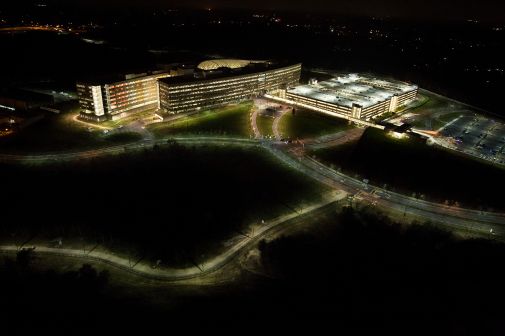Under C2E, IC’s top challenge is turning cloud competitors into partners

The intelligence community has five cloud providers in place to soon deliver capabilities under its multibillion-dollar Commercial Cloud Enterprise (C2E) contract. But now comes the hard part: incentivizing those companies to work together rather than compete for task orders under the larger contract.
Acting intelligence community CIO Michael Waschull pointed to this dynamic of collaborating competitors as the greatest challenge the IC faces in moving to the C2E multi-cloud contract from single-cloud predecessor, the Commercial Cloud Services (C2S) vehicle.
Last fall, the contract manager CIA awarded the cloud services portion of C2E to Amazon, Google, IBM, Microsoft and Oracle. The new multi-cloud contract will have a 15-year period of performance and be worth “tens of billions” of dollars, according to contracting documents. The contract holders will compete for task orders at various levels of classification, up to the top-secret level.
Waschull told FedScoop “the idea of five different world-class cloud providers, bringing their capabilities, their knowledge, skills, and their capacity to bear on our problems and allowing the components within the IC to pick and choose so we can tailor and devise a best-fit molecule of capabilities, that shows great promise.” However, he said, that’s “if and only if I can overcome the one big obstacle that stands in our way: How do we incentivize collaboration, cooperation, communication, and mutual support between and among what are frankly these five competitors.”
The model is ideal for the IC but runs contrary to the values of the profit-driven private sector.
“By their very nature, they are private sector mission partners, they are motivated by profit, they are motivated by competition,” Waschull said. “We’ve got to instill a core value in that we appreciate collaboration and cooperation, more than we appreciate any single technical provision or any single lowest price.”
He added: “We want best value. We want to promote integration of effort, promote each different competitor understanding not only their product lines but understanding the capabilities and limitations of their competitors’ product lines so that they can work together to come up with the best possible technical and business solution to the government’s needs.”
Waschull, who spent part of his career with the Missile Defense Agency, compares this environment to MDA’s model for the Missile Defense National Team, which brings together leaders in the aerospace sector like Lockheed Martin, Boeing and Raytheon to support the agency’s Ballistic Missile Defense System.
“If we can do here, with our cloud efforts, what they have done there with their missile defense efforts and forgo competition in lieu of cooperation and collaboration, we will be in a great place,” he said.
The Department of Defense stands to learn from the IC’s venture into this multi-cloud model after it recently announced it will go down a similar path, canceling its failed single-vendor cloud acquisition, the Joint Enterprise Defense Infrastructure (JEDI).
To further support such a model, the IC is also planning to bring on a systems integrator through a second, separate contract under C2E to help manage this environment — “providing knowledge, skill and ability to help the government make the best possible choices to devise that best-fit formula for cloud capacity and capability,” Waschull said.
In the past, the IC has had consultants to advise on such IT procurements. But this integrator will be a built-in partner whose “award fees are predicated upon helping us make not only the best technical decisions for the implementation of cloud capacity across our enterprise but to understand the various pricing models from each particular vendor,” Waschull said.
“Understanding volume discounts, understanding the way they compute pricing and knowing it so well that they can advise the government to say between two or three equally competitive technical approaches, from a business perspective, this is the way you want to go,” he said. “Having that kind of incentivized professional analysis to help guide the decisions we’re gonna make, I think is wicked powerful.”
The cloud services portion of the C2E contract and the five providers are working to reach initial operational capability status to begin work. Until the integrator contract is awarded, they are supported by the CIA Cloudworks Program Management Office, said Waschull, who meets with the providers individually and as a group on a monthly basis to discuss challenges, opportunities and their perspectives.
When this multi-cloud capability does come online, the “unity of effort sets the stage, sets the table to take us to the next level,” Waschull said.
“When we look at 21st-century warfighting in a peer competitor environment and the volumes of data coming down from our overhead constellations, being generated locally by artificial intelligence and machine learning applications and being exchanged to competitive advantage between and among IC components, warfighters and others — that is a huge problem set,” he said. “But these building blocks really lend themselves to be able to come up with those creative solutions that will enable us to manage the volume and velocity of the information that we’ve got to move around.”
Waschull concluded: “Having these best of breed cloud contributors in the fight with us, if we can find the magic sauce that gets them to work together, cooperatively and collaboratively, we’re going to be in a far more competitive place than our neighbors that we have to deal with in this 21st-century competition.”
This story was featured in FedScoop Special Report: The Continued Push to The Cloud - A FedScoop Special Report




